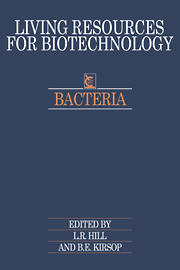Book contents
5 - Identification
Published online by Cambridge University Press: 04 August 2010
Summary
Introduction
Bacteria are ubiquitous and although the most comprehensive compendium, Bergey's Manual, lists only two to three thousand named species, the diversity of habitats means that no single identification scheme can be devised for the whole spectrum. With bacteria, the species definition itself is pragmatic, since a species is that which, for practical purposes, we find useful to consider as a species. A listing of only two to three thousand species names – a small number compared with, say, fungi, or insects – perhaps tells us more about the restraint of bacterial taxonomists rather than about bacterial diversity. It is certain that a unit currently considered to be ‘species’ in one of those parts of the total bacterial spectrum that has come under much study (e.g. pathogens of the human gut; antibiotic producing soil organisms) does not correspond in taxonomic rank with a ‘species’ in a little-studied part of the spectrum.
Identification to species level, however broadly or narrowly defined, is a major part of bacteriological practical work. However, it may be important to know not only to what species the organisms belong, but whether two or more isolates are, in fact, the same strain. For example, from multiple isolates in a hospital, can it be deduced whether a particular strain is spreading?
- Type
- Chapter
- Information
- Bacteria , pp. 81 - 94Publisher: Cambridge University PressPrint publication year: 1991



